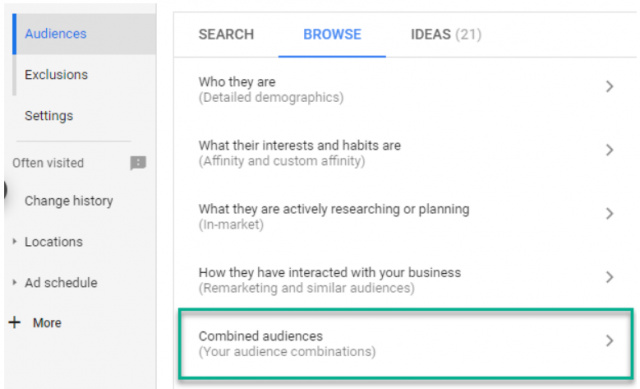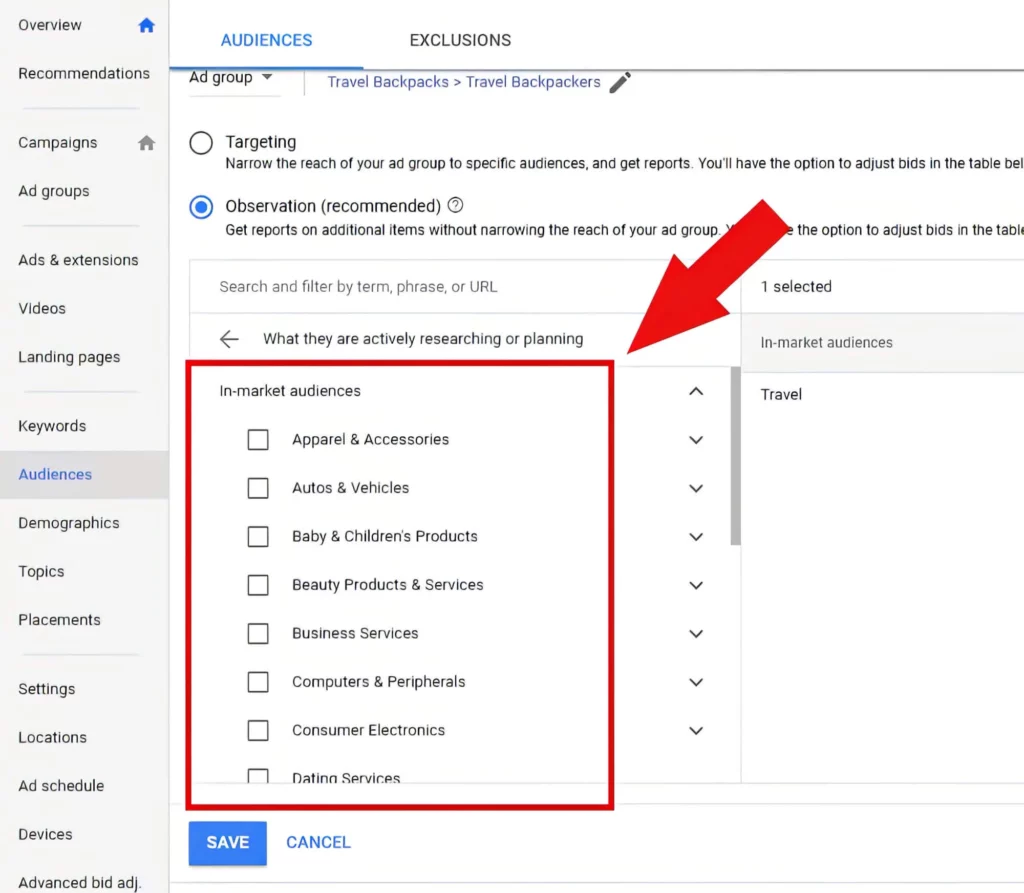Post map
ToggleThe first important step is to reach the right customer audience to achieve high effectiveness in Google Ads. Even if you manage to reach a large number of users, if they don’t need your product or service, your ads will not meet the expected results. Therefore, creating custom audiences when running ads is both necessary and important. So, what are Google Ads audiences? How to automatically create Google Ads custom audiences? Follow this article by Optimal Fb now!
What are Google Ads audiences?
Custom audiences allow you to reach the ideal audiences for your business in Display and Video campaigns by segmenting ad groups based on specific keywords and landing pages that you want to target. You can use custom audiences with automatically created audience segments, or you can define your audience by entering keywords and applications related to your product or service. Then, Google Ads will display your ads to people who are likely to be interested in these keywords on pages, applications, and videos. To learn more about audience targeting features, you can refer to detailed information. When starting with custom audiences, you need to create a keyword list to target the right customers. This also applies to creating ad groups and setting default bids for your ad groups. These are basic steps you should refer to optimize your ad campaign.

Roles of Google Ads audiences
Using Google Ads audiences brings significant benefits to your ad campaigns. Here are some reasons why you should apply this feature:
Understanding customers and the benefits of Google’s AI technology:
Google Ads audiences help you discover unique features of the user group interacting with your ads. This is crucial for understanding your target customers’ needs, preferences, and behaviors. Google’s AI technology aids in analyzing and identifying audience groups that bring the highest performance to your campaign. By utilizing this information, you can efficiently refine and adjust your ad audience.
Improving ad templates:
Google Ads audiences also allow you to learn which ad template components and messages attract users the most. By analyzing this data, you can adjust and improve your ad templates to enhance the attractiveness and effectiveness of your campaign.
Improving overall campaign results:
When you have a better understanding of your target market and which ad templates perform best, you can make necessary adjustments to optimize targeting criteria and overall campaign performance. By optimizing factors such as audience, ad templates, and approach, you can achieve better advertising results and improve campaign performance.
In summary, using Google Ads audiences is an essential part of optimizing your ad campaign and achieving better business results.
How to set up Google Ads audiences?
To set up audiences in Google Ads, follow these steps:
- Step 1: Log into your Google Ads account: Visit the Google Ads website and log in with your correct login details.
- Step 2: Select Display Campaign: From the navigation menu, choose “Display Campaign” and select one of your active campaigns.
- Step 3: Select Audience: In the campaign management interface, click on the “Audience” tab.
- Step 4: Edit audience: Click on the pencil icon to edit the current audience or to create a new one.
- Step 5: Choose ad group: Select an ad group from the available list or create a new ad group if necessary.
- Step 6: Select Audiences considering purchasing: In the “Browse” tab, you can choose products or services that customers are actively researching and planning. These are the custom intent audiences you want to target.
- Step 7: Add new audience: In the “Custom intent audiences created automatically” section, click on “New audience” and select the audiences you wish to add.
- Step 8: Save changes: Once you have finished selecting audiences, click on the “Save” button to save the changes and apply the new audience to your campaign.
By following these steps, you can effectively use custom audiences to shape and optimize your Google Ads display campaign.

Optimal FB hope that this article can assist you in understanding Google Ads audiences, and how to successfully set up Google Ads audiences.
Contact Info
Are you in need of Facebook advertising or need to rent a quality Facebook advertising account? Don’t worry! Optimal FB is a unit specializing in providing reputable Facebook accounts, as well as direct advertising support. Provides all types of advertising accounts such as casino ads on facebook to help you reach and create fast conversions.
When setting up audiences in Google Ads, there are some important considerations to note to ensure the effectiveness of your campaign. First, clearly define your objectives and the target audience. Then, carefully select audience features such as age, gender, geography, and interests to ensure that your ads are only displayed to people likely to be interested and respond positively. Also, consider using audience expansion tools and options like similar audiences, custom ads, and lookalike audiences to broaden your reach. Finally, continuously monitor and optimize your campaign based on data and feedback to ensure you are achieving your advertising goals in the best possible way.
When setting up setting up Google Ads audiences, there are some limitations. First is that targeting based solely on basic information like age, gender, and geography might limit the ability to reach more complex audience characteristics. Moreover, defining audiences based only on data available from Google might not be accurate enough or may not correctly reflect the actual features of the target audience. This could lead to spending the budget on ineffective audience targeting. Additionally, setting up audiences does not eliminate displaying ads to non-relevant users but only minimizes their reach. This is especially important when the campaign’s goal is to target specific audiences and exclude non-relevant ones.


